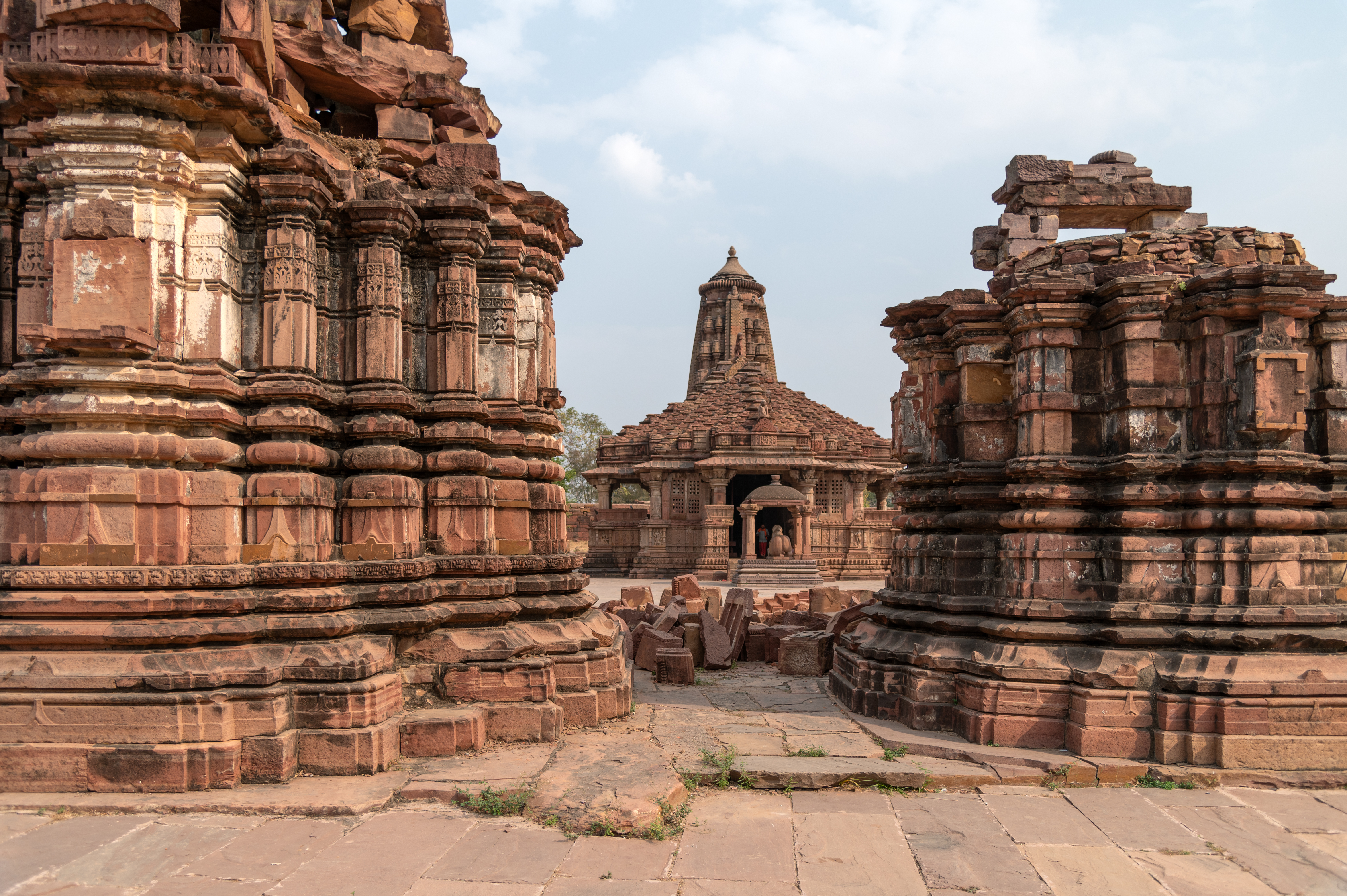Mahanal Temple And Math: Menal Group of Temples
Chittorgarh, Rajasthan
By Swapna Joshi
The scenic location of the Menal Valley in Rajasthan is home to exquisite temples and monasteries built over four hundred years, ranging from as early as the eighth century up to the fourteenth century CE. Apart from the two large temples, Mahanaleshwar and Suhaveshwar, there are about four to five smaller temples, two monasteries, and several architectural fragments strewn within the premises of the complex. While Mahanaleshwar is a significant example of the Bhumija variety of temple architecture, there are temples built in the Latina and Shekhari styles as well. The edifices were mainly patronized during the reign of two important dynasties; Maurya of Medapata and Chahamana of Sapadalaksha. The entire complex has also undergone re-use of architectural members in the later period of construction, revealing that Menal remained a site of political and religious importance over a long period. The village abutting this Menal valley is a small settlement, located just off the Bundi Chittorgarh highway. The site receives more tourists during the rainy season to enjoy the dramatic waterfall. A modern temple outside the Menal complex attracts a large number of devotees.
This module encompasses the architectural exuberance found in Menal while covering all its key facets. The overview article delineates the architectural niceties, points out the peculiarities, and paints an elaborate picture of the Menal complex. Among the main temples of the complex, the Mahanaleshwar Temple has received significant attention from scholars but the Suhaveshwar Temple, although less studied, serves as an important historical marker because of the presence of an inscription to corroborate the building of the temple. This is supported by an article that reckons all the inscriptions found in the Menal complex. It is through these inscriptions that the nature of the patronage received by Menal becomes clearer. An allied article details the lesser-known matha (monastic buildings), which are a rare occurrence in Central India. Two such mathas in the Menal complex, one of which has an inscription about patronage extended to the Shaiva sect of Pashupata, suggest the contemporary religious conditions in the region of Menal. The module also includes an image gallery and architectural drawings.
There are many remains in the Menal temples awaiting a nuanced study by experts. The locals say that there are more temple structures in the forest cover in the peripheral region of the temple complexes, however, precise details await explorations in the region.
